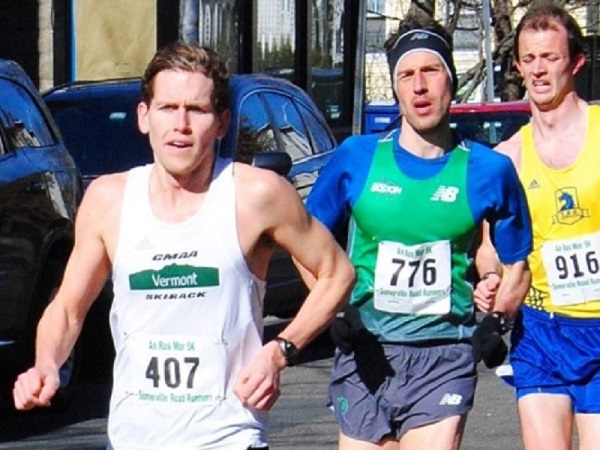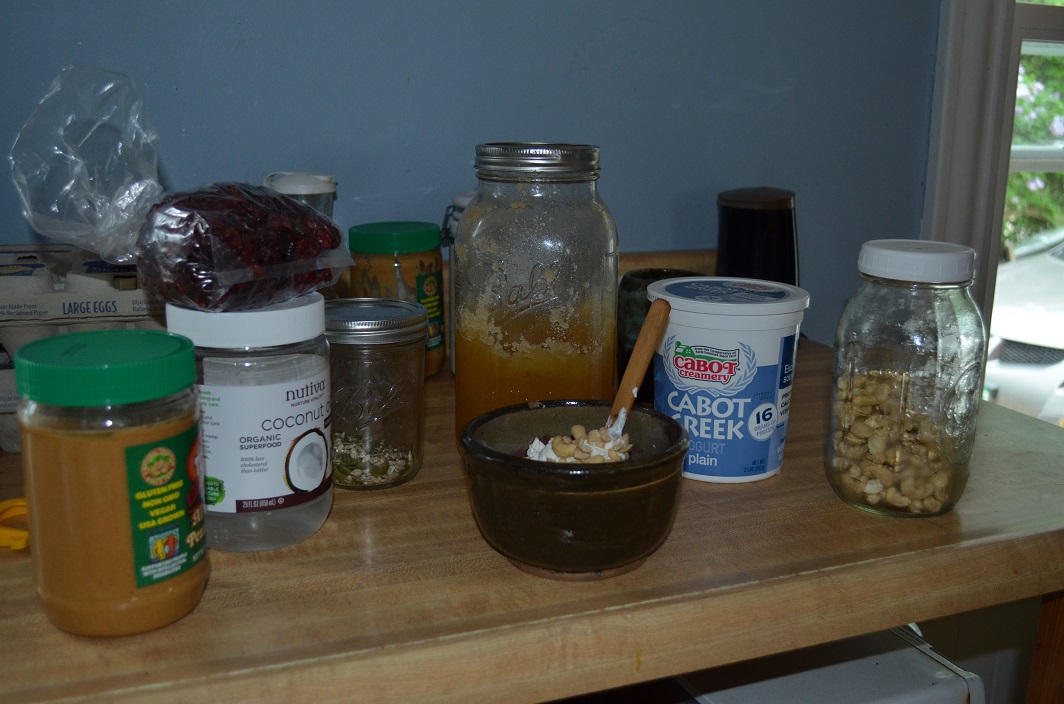
Racing An Ras Mor in 2016
Fat adapted running is all the rage these days. One nice element to this fad is that it seems to be supported by scientific studies that have been published over the past three decades (e.g. Lambart 1994, Volek 2015). Many of these studies have come out of Tim Noakes’ lab. The South Africa-based researcher is most known as the author of Running Lore. The book is a dense tome that collects the body of knowledge about running physiology, psychology, and philosophy. It is a testament to his decades of focused research into the factors that influence performance in endurance athletes. His work has challenged many assumptions in the running community, particularly the high-carb diet dogma (Noakes 2014).
The general understanding with runners is that we need to carbo load before a race, pretty much from anything longer than a mile. In high school we’d starch up the day before a 3-mile cross country race. I’d do the same for 8k races in college. I first heard the absurdity of this put into context by Matt Fitzgerald in a Runners Connect podcast (maybe this one?). His argument is that our bodies can easily store enough glycogen (the storage form of glucose used by humans, other animals, and fungi – more evidence for why fungi are more related to animals than plants) to run for 2 hours, no carbo loading necessary. As long as it doesn’t take you 2 hours to run a 5k (or half-marathon) you could basically fast the night before and be fine. It’s for longer races like the marathon that a carb blast would be helpful (though Eliud Kipchoge’s near miss of a sub-2 marathon might prove this wrong).
The body has about 30,000+ calories of stored energy in fat and just 1,500 calories of stored glycogen to fuel activity. Our bodies selectively burn glycogen first, and only after we deplete our stores of glycogen do we begin to metabolize fat for energy. While fat stores way more energy than glycogen per unit of weight, it takes much longer to convert fat to readily usaable energy than it does glucose. So by the time we’ve depleted our glycogen stores in a marathon it’s too late to try and burn fat to sustain the activity. The result is the dreaded wall. We can replace some of the glycogen by consuming gels, gus, gatorades, etc during a race. But we still have to digest and process these. So what if we could train our bodies to both store more glycogen and burn fat sooner? It’d be incredible!

Fat-adapted breakfast of champions: greek yogurt, peanut butter, coconut oil, cashews, papitas, sunflower seeds, cranberries and honey. Ugh, I’m turning into a foodie.
And it might even be possible. I came across a high fat taper diet in Matt Fitzgerald’s New Rules of Marathon and Half-Marathon Nutrition a few years ago and was intrigued. It seemed to make intuitive sense and while there wasn’t a lot of info about high level athletes using this during races I decided to try the high fat diet before the Chicago Marathon in 2015. The basic premise is:
- During the taper before a marathon, starting 14 days out from the marathon: Switch to a 65% calories from fat diet
- 3 days out from the marathon: Switch back to 65-75% of calories from carbs
I’ve had positive results with this taper diet. It’s definitely not easy. As suggested by Matt, I felt really low energy after about 4 days of the high fat diet. I hated eating and started fretting about how this would translate to how I would feel during the race. During the carb load phase at the end of the taper diet – which couldn’t come soon enough – I perked up immediately and supercharged. During the race I went out fast (around 2:19 pace for the first 4 miles). I backed off and settled into a pace closer to a 2:21. I couldn’t quite recover from the early pace and started to crash around mile 15. My pace went from 5:22/mile to 5:27 and then 5:52. I managed to drop down to 5:45 pace from 30-35k. In the last 3 miles when I was fearing I would totally bonk I started to feel incredible. I sped up and started passing people. I wound up running the last 2 miles in 10:25, my 2nd and 3rd fastest miles of the race. While a lot of factors probably supported this late boost, I definitely attribute the diet to part of the success.
So with the Vermont City Marathon coming up next week (May 28) I’m already 3 days into the high fat diet. This is now the 4th time I’ve utilized this for a marathon and I’m hoping it helps my body maintain a constant level of energy throughout the race and stave off the wall until the 27th mile. I’ll post again on the diet next week and a reflection after the race.



